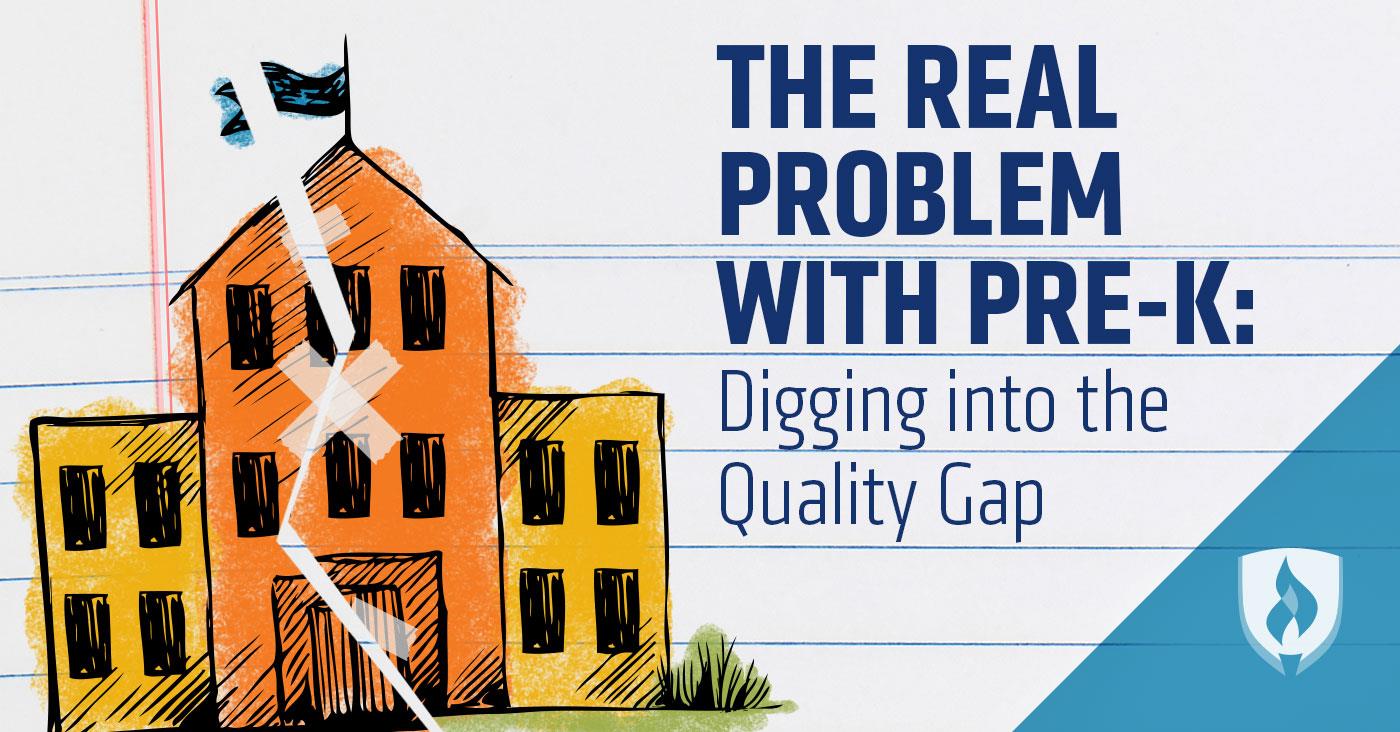
Many would assert that 2016 was a big year for early childhood education (ECE), with several new studies released revealing the true, statistical importance of quality ECE programs, such as Head Start. It was widely reported that—when done right—programs like these can provide low-income students with benefits that will impact them for the rest of their lives.
With that in mind, many have been working toward making early childhood programs universally available to families in the U.S., regardless of economic status. Increasing the availability of ECE has garnered bipartisan support backed by six in 10 Americans who agree that pre-K should be free for everyone. What has become increasingly clear, however, is that making ECE more accessible may not be enough to help our children.
With educators, policymakers and journalists taking note, this must mean some big things are in in store for ECE in 2017 and beyond, right? Join us as we dig into the facts surrounding the availability and quality gap that exists among early childhood programs and consult education experts to uncover what awaits ECE in the coming years.
What we learned about ECE in 2016
The undisputed benefits of quality ECE
Much of the talk surrounding ECE in 2016 hinged on studies digging into the true impact of Head Start programs nationwide. These programs have been criticized for touting benefits that appear to fade within a few years’ time. Such criticism begs the obvious question of whether or not there is worth in continuing to support the $8 billion federal program.
The 2016 findings boast a conclusion that may seem obvious: When it comes to early learning programs, quality matters. In fact, it has been revealed that attending a low-quality childcare program can actually have damaging effects—so much so that the students would have been better off simply staying home with a parent or guardian.
Many of these findings focus on the state of Oklahoma, which has facilitated one of the earliest and most closely-monitored attempts in the U.S. to provide universal, high-quality preschool statewide. Analyzing the long-term success of a sampling of children who participated in Tulsa’s largest Head Start program, it was revealed that the students who received quality ECE earned higher scores on state math tests by eighth grade. These students were less likely to be held back in school and were also less likely to display chronic absenteeism. They were less likely to commit crimes later in life, become obese, suffer from hypertension or to have precursor environments that would promote diabetes.
The results unveiled from this study and others concluded that the benefits of these early learning programs grew or held steady through at least fifth grade, representing a solid return on investment.
In fact, a new paper from the Infant Mental Health Journal revealed that boys who attended an ECE program with enriching activities, qualified faculty and a nurturing environment were between 11 percent and 19 percent more likely to be employed by age 30 than boys in a lower-quality facility. It also found that girls who attended the more robust facilities were between 13 and 25 percent more likely to graduate high school, and 13 percent more likely to graduate college.
The ECE quality gap
Discussions surrounding universal childcare or pre-K are far from new, but as they gain more and more traction nationwide, experts are urging ECE professionals and policymakers not to lose sight of the importance of quality amidst the rhetoric of accessibility. Consider the following facts from the National Institute for Early Education Research (NIEER):
- Nearly 1.5 million children in the U.S. attend state-funded preschools.
- 43 states offer a publicly-funded preschool option.
- Just six states that offer publicly funded options met all 10 of the NIEER quality benchmarks.
- Nine of the state-funded programs met just half or fewer of the NIEER quality benchmarks.
While high-quality early learning programs may boast a steep price tag up front, Nobel laureate, James Heckman, maintains that the return on investment would far outweigh that of investing in the stock market. This point is made by considering the cost of the criminal justice system, reduced healthcare expenditures, higher quality of life and more.
“Every dollar spent on high-quality, birth-to-five programs for disadvantaged children delivers a 13 percent per annum return on investment,” Heckman wrote in his research. “The gains are significant because quality programs pay for themselves many times over. The cost of inaction is a tragic loss of human and economic potential that we cannot afford.”
"There are still so many challenges and issues that need to be addressed in the coming years."
“ECE has certainly made tremendous strides on all fronts. We’ve seen significant improvements in the quality of Head Start standards and individual early childhood providers, as well as an increase in learning communities and paid-leave policies for new parents,” explains Michael Lan, language education consultant at Glossika. “While we can definitely say that 2016 was a great year for ECE as a whole, there are still so many challenges and issues that need to be addressed in the coming years.”
“Research supports evidence-based programs that feature well-prepared and supported teachers, evidence-based instruction, well-designed and integrated professional development and valid and reliable measurement of the skills identified with school readiness,” says Jack McCarthy, president and CEO at the AppleTree Institute for Education Innovation.
He defines those skills related to school readiness as language and literacy, numeracy and social-emotional skills. These are the positive behaviors that prepare children to navigate school, such as being able to attend to instruction, follow directions from teachers, take turns, share and persist when frustrated.
But as McCarthy points out, the early childhood education sector is still highly fragmented and uneven in terms of quality. He explains that ECE is delivered through a variety of programs including Head Start, TANF child care subsidies, state-funded pre-K programs as well as private early childhood development centers. Each of these spans across the far-reaching spectrum of cost and quality.
So what does all of this mean for ECE moving forward? We consulted our education experts to find out.
The future of ECE
“With the momentum ECE has picked up in 2016, I would expect support for early learning to continue rising,” Lan predicts. “As more and more people come to realize just how important early childhood learning is, policymakers will surely be put under a microscope and will be pressured much more than they were before to enact policies to improve the overall quality of ECE in the long run.”
Lan also strongly believes that the need for early learning workers and Head Start teachers will increase significantly. This demand will hopefully result in higher salaries for ECE workers and amplified funding and resources for schools and early learning programs.
But it doesn’t stop there, particularly when there’s still plenty of work to be done behind the scenes.
“Most policies tend to be aimed at increasing compensation of the workforce, particularly Head Start and the TANF child care subsidy programs,” McCarthy explains. He argues that additional thought must still be dedicated to the more pressing question: What are our goals for expanding access to high-quality early childhood education?
He poses a few possibilities: Should we focus on offering support for adults entering or seeking to stay in the workforce with affordable, accessible childcare? Or should we hone in on closing the achievement gap through evidence-based early interventions in the skill areas that prepare children to thrive in kindergarten and beyond? Even further, should our focus potentially be on both?
“Setting clear goals informs theories of action which, in turn, inform the critical inputs that can be costed out in developing programs,” McCarthy explains. From a policy perspective, he adds that no one has set the goal of closing the achievement gap before children enter kindergarten. He asserts that this could be a transformational policy if brought to scale across the 50 states.
How can you impact the quality of ECE in the future?
While many of our most prominent questions surrounding ECE remain unanswered as we wait for formal action to be instated, we can rest assured that 2016 did its part in bringing the true importance of ECE to the forefront. If we each commit to keeping the conversation afloat and holding our leaders accountable regarding continued action, we will surely have more to report on in the years to come.
But you may be wondering what you can do in the meantime. Even if you’re not one of the educators on the frontlines of ECE, it’s your duty to keep a finger on the pulse of modern education so that you can best serve your children and students, regardless of where they are in their educational journeys.
One of the most surefire ways of accomplishing this is to tune into the teaching trends that most impact this generation of learners. Learn more by visiting our article that explores the question, “What Happened to the Universal Pre-K Promise?”
RELATED ARTICLES:
- 4 Reasons You Can’t Ignore the Importance of Early Childhood Education
- 9 Signs You Should Be Teaching Preschool
- 15 Literacy Activities for Preschoolers
- Preschool Readiness: How to Be Confident Your Kid is Ready to Conquer the Classroom
- 5 Multicultural Activities for Preschoolers to Help Teach the Importance of Diversity
- 5 Practical Preschool Teacher Skills You May Already Possess




